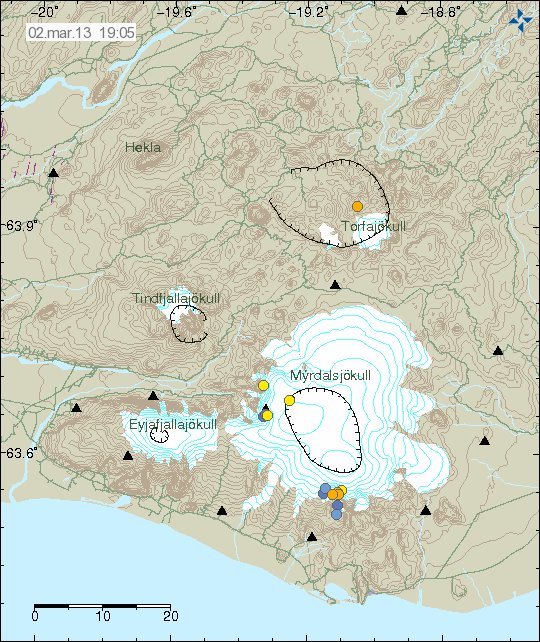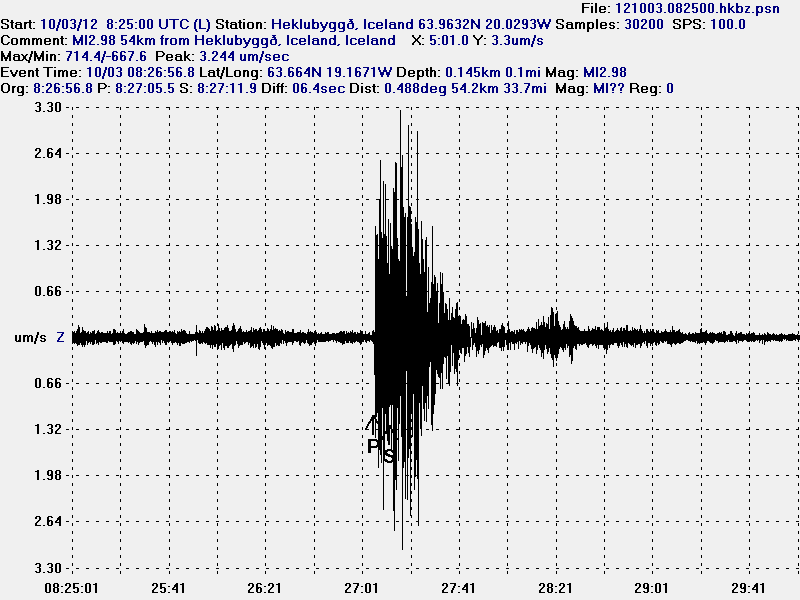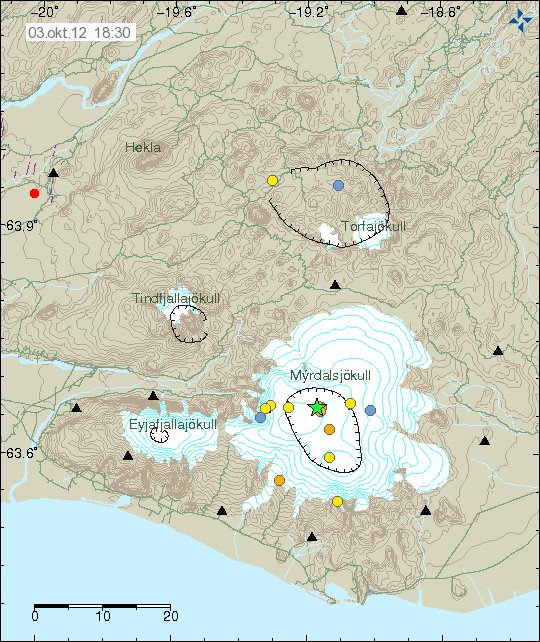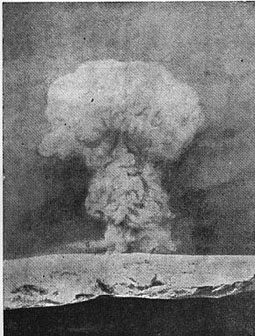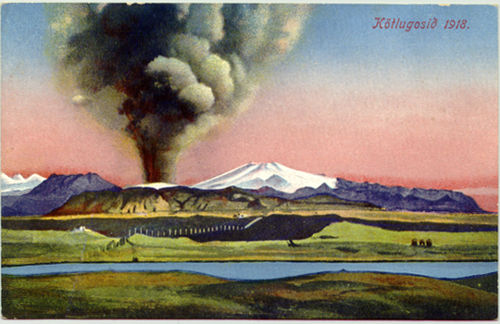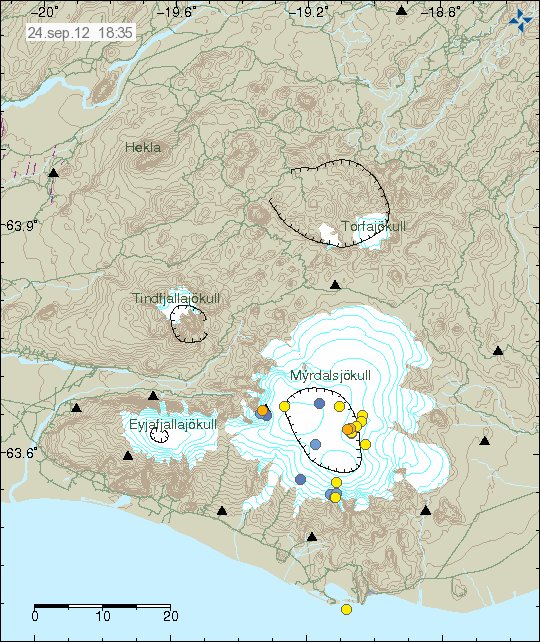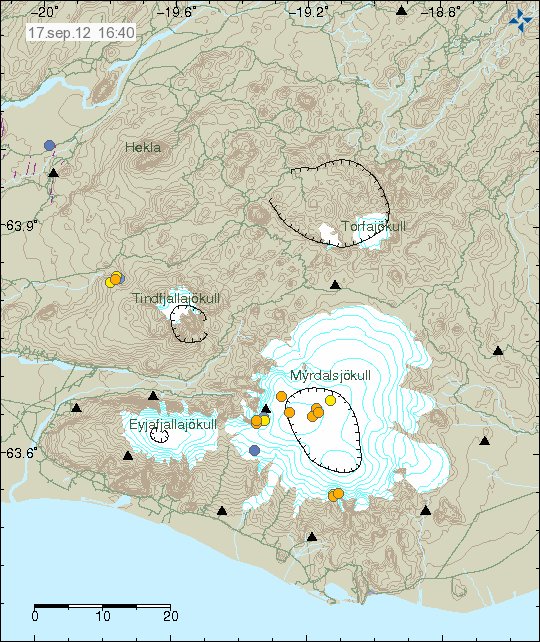When there is nothing going on in Iceland. It is good to prepare for the future by checking out what has happened in the past. Here is a comparison of harmonic tremor data from few past eruptions. I only have limited set of data to work with here.
Grímsfjall volcano eruptions 2004 and 2011
Harmonic tremor indicates how strong the eruption is when it is happening. This is clearly visible on the harmonic tremor plots from the Grímsfjall volcano eruptions in the year 2004 and compared to the eruption in Grímsfjall volcano eruption in the year 2011.
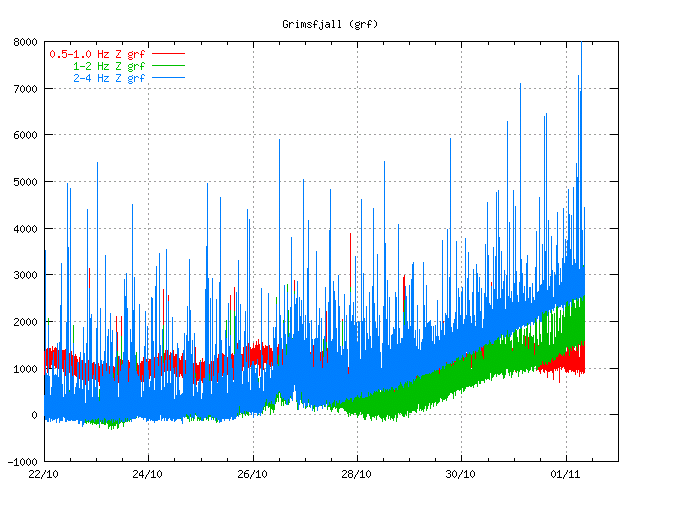
Harmonic tremor in Grímsfjall volcano eruption in the year 2004. Copyright of this image belongs to Icelandic Meteorological Office.
This harmonic tremor plot is from the early start of the eruption. It clearly shows when the eruption starts and how it progressed during it’s first few hours.
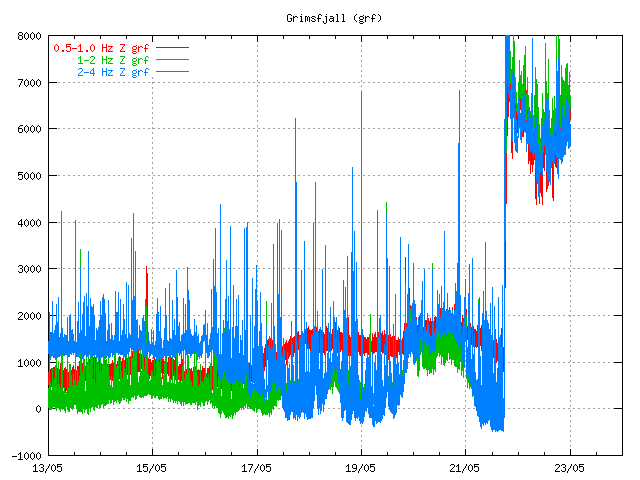
Here is the volcano eruption start in Grímsfjall volcano on 23. May 2011. This is the start of the eruption. It clearly shows the difference from the eruption that took place in the year 2004. Both is that starts sharper. But is also a lot more powerful then the eruption in the year 2004. Copyright of this image belongs to Icelandic Meteorological Office.
Eyjafjallajökull volcano and Katla volcano
Sometimes it is useful to compare two eruptions of two different volcanoes. This is useful when you really don’t have anything else to compare with.

Harmonic tremor in Eyjafjallajökull volcano eruption back in the year 2010. This is from the second phase of the eruption. But I seems to have misplaced or not saved harmonic tremor data from the first phase of the eruption (at least I cannot find them for the moment). Copyright of this image belongs to Icelandic Meteorological Office.

Harmonic tremor connected to a minor eruption in Katla volcano in July 2011. This eruption was minor. But created a flood that took out a bridge. Copyright of this image belongs to Icelandic Meteorological Office.
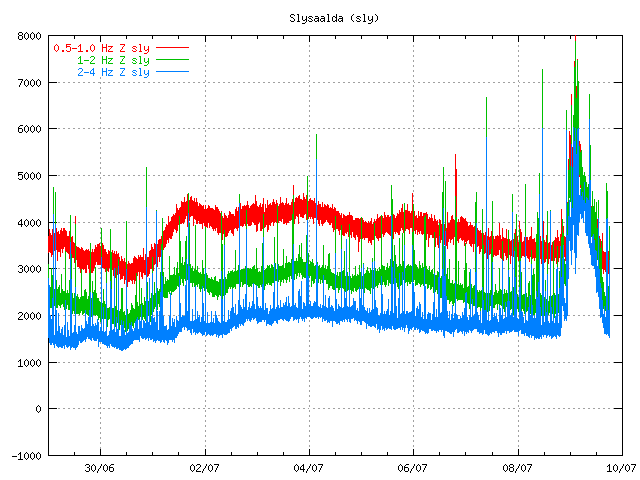
Diffrent SIL stations from the same minor eruption in Katla volcano in July 2011. This clearly shows that this minor eruption in Katla volcano was possibly larger then eruption in Eyjafjallajökull volcano year earlier (2010). But it did not manage to break the ice of Mýrdalsjökull glacier. Copyright of this image belongs to Icelandic Meteorological Office.
Past data show and are useful to learn what happens in a volcano. For this reason I now save important information on what is happening in a volcano. So I can compare it with future activity when it takes place.

